How to request a certificate of ownership of a domain .ES
Unlike generic domains, “.es” domains have other particularities that make it necessary to manage many of their aspects from ESNIC, the entity that manages them.
One of the actions that must be carried out from the ESNIC portal is the application for the domain ownership certificate. Below we will explain the necessary steps to apply for it:
danger These steps must be carried out by the domain holder as passwords must be requested during the process, and these credentials will be provided to the holder's mailbox.
Create access to the ESNIC management portal
First we must access the control panel of Red.es which is the ESNIC management portal.
Given that initially we do not know the access credentials, in the window we will see we
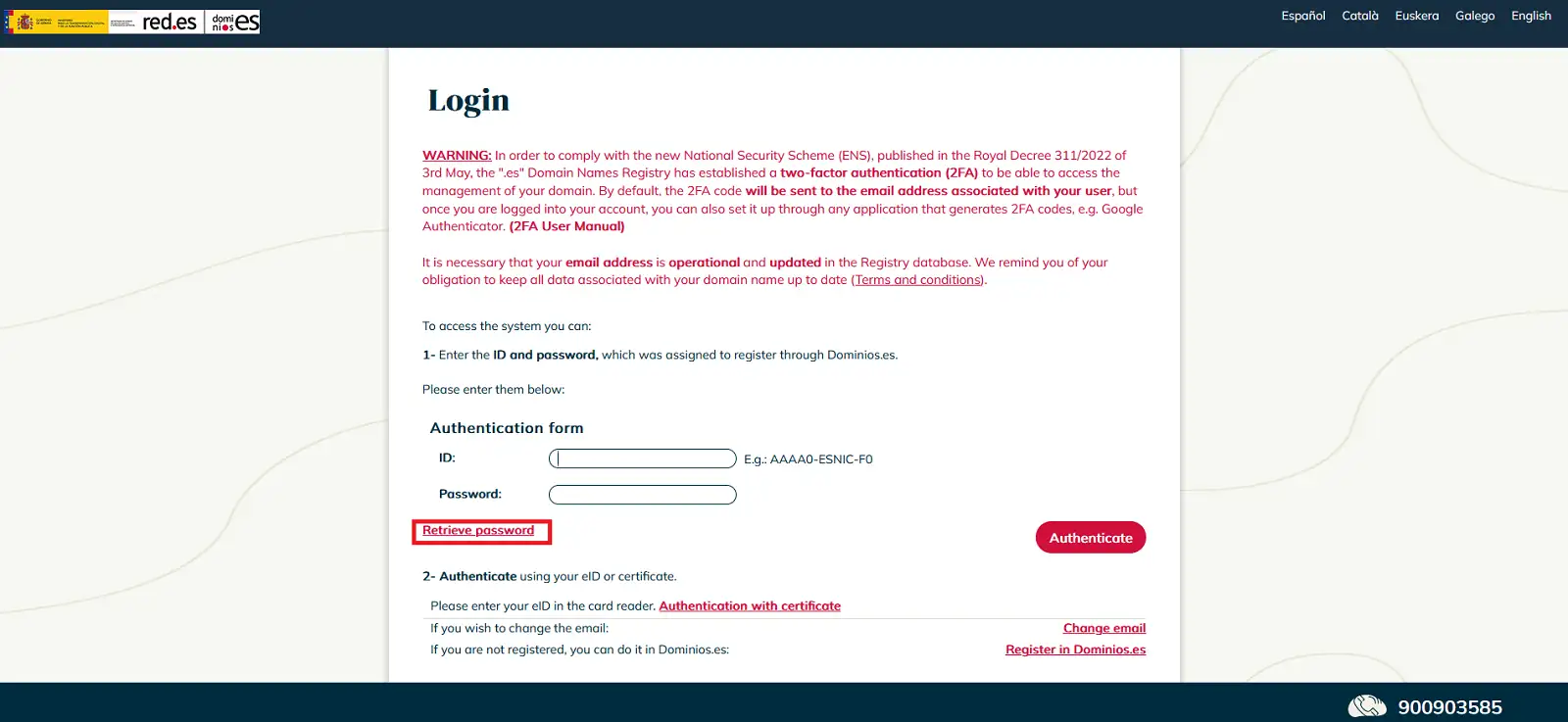
In the next window you will be asked for the ‘Identifier’ of the contact who owns the domain. In case you don't know it, you can make a whois query about your domain from our website SW Hosting. You will be able to see it in the highlighted area:
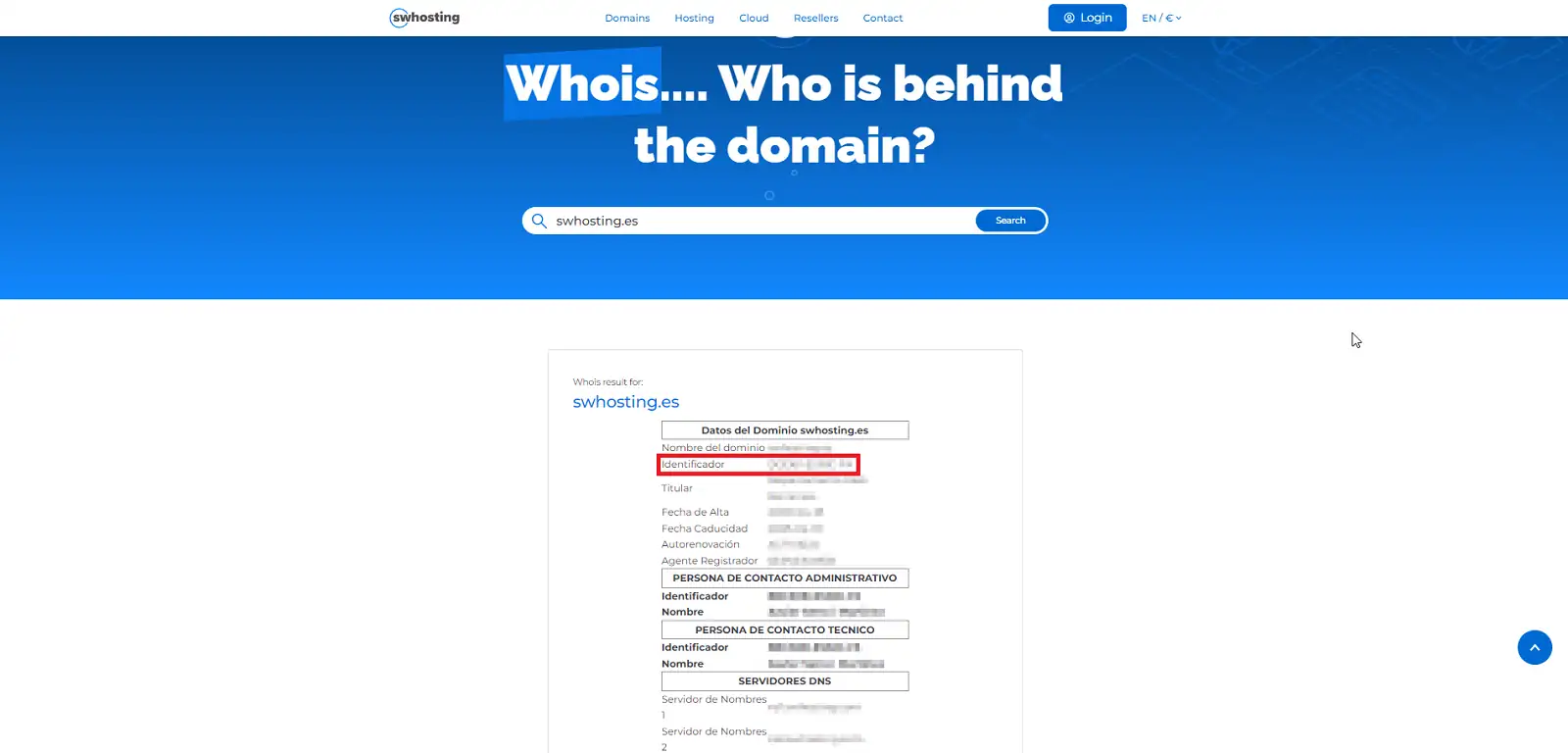
Once you are clear about the identifier, you can enter it in the corresponding section:

When you select continue, an e-mail will be sent to the e-mail address associated to the contact owner of the domain, so you will have to look for this e-mail address and select the option ‘Renew password’.

This link will take us to the following window, where we will have to introduce again the identifier, and the new password that we want to use (that fulfils the parameters that they indicate us).

Access to the domain management panel
Once we have successfully modified the password, we will be able to use these credentials together with our identifier to access the Red.es panel.
Enter the credentials generated in the corresponding section, and click on the ‘Log in’ button.
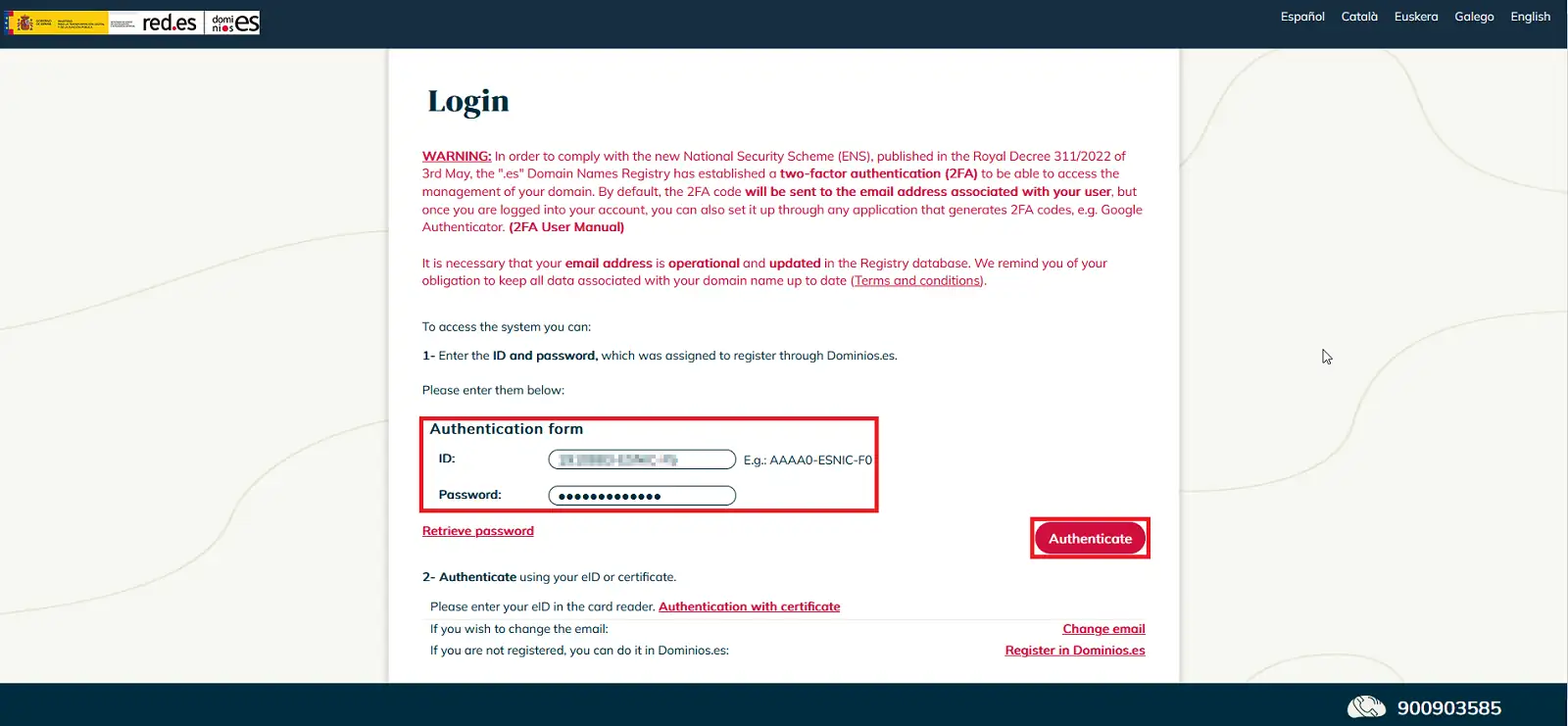
Once we try to authenticate, an e-mail will be sent to the owner contact's mailbox, as we are asked for the two-factor authentication code.
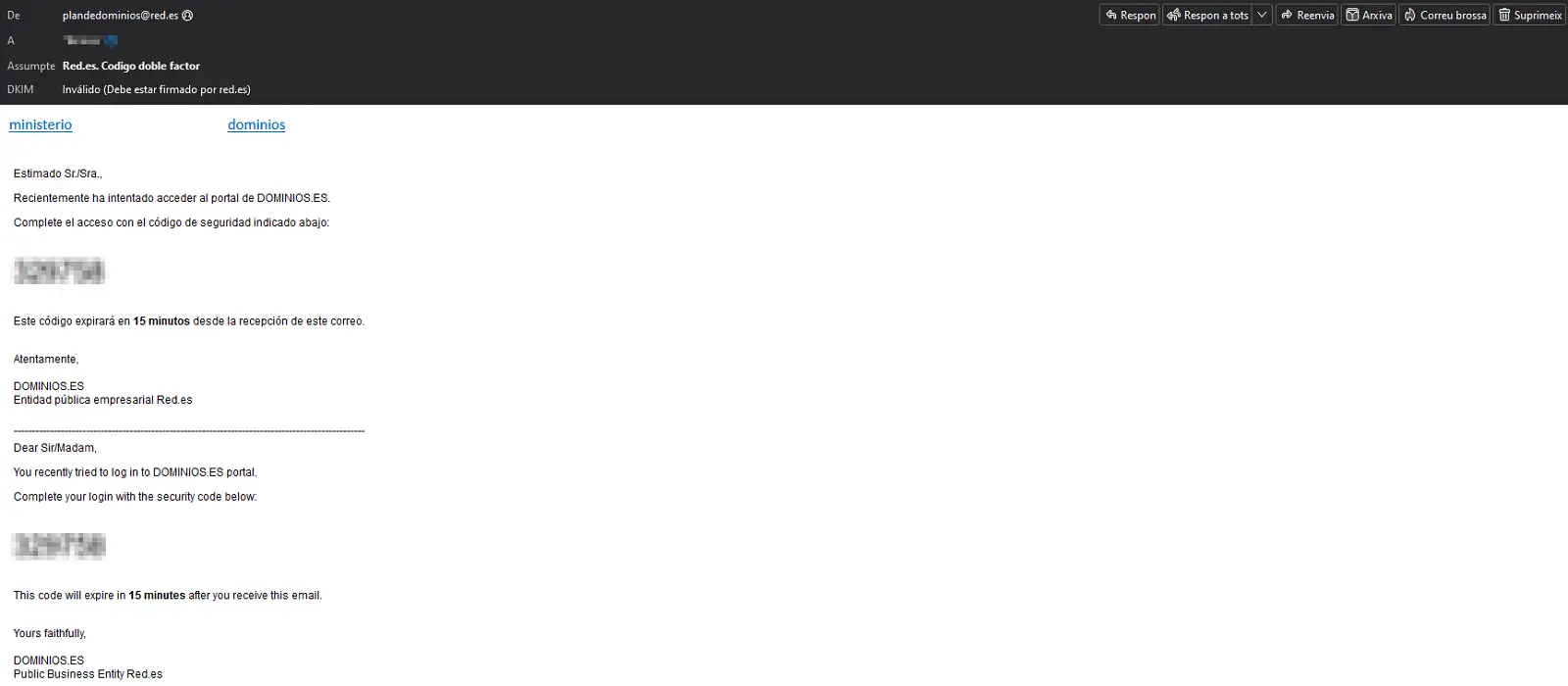
Afterwards, we will have to enter the code in the text box, and we will access the control panel.

Once inside the panel, we must go to the left side menu and select the section ‘Domain registration’. In this section, enter the domain name for which you want to issue the certificate, and click on ‘Search’.

In the next section, we will see the same domain with different extensions. We must select the option ‘View data’ on the right of the corresponding domain.

Once we are in the data visualisation section, we will see in the upper right-hand side the option to issue the ‘Certificate of ownership’.
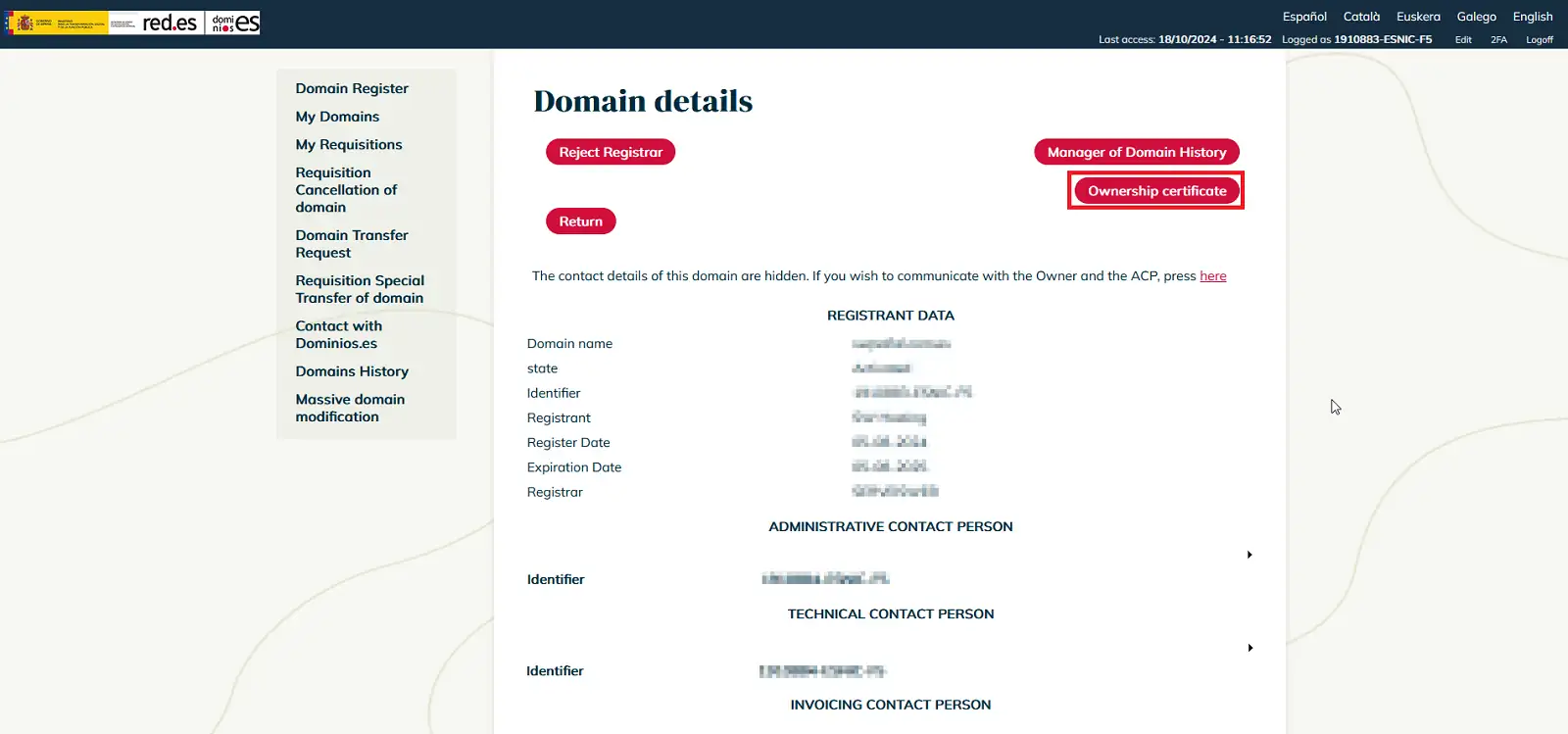
We will be directed to a section where we can select the data to be reflected in the certificate, and once we have selected what we want, click on ‘Generate certificate’.

Immediately, we will receive an e-mail to the mailbox associated to the owner contact with the requested certificate as an attachment.
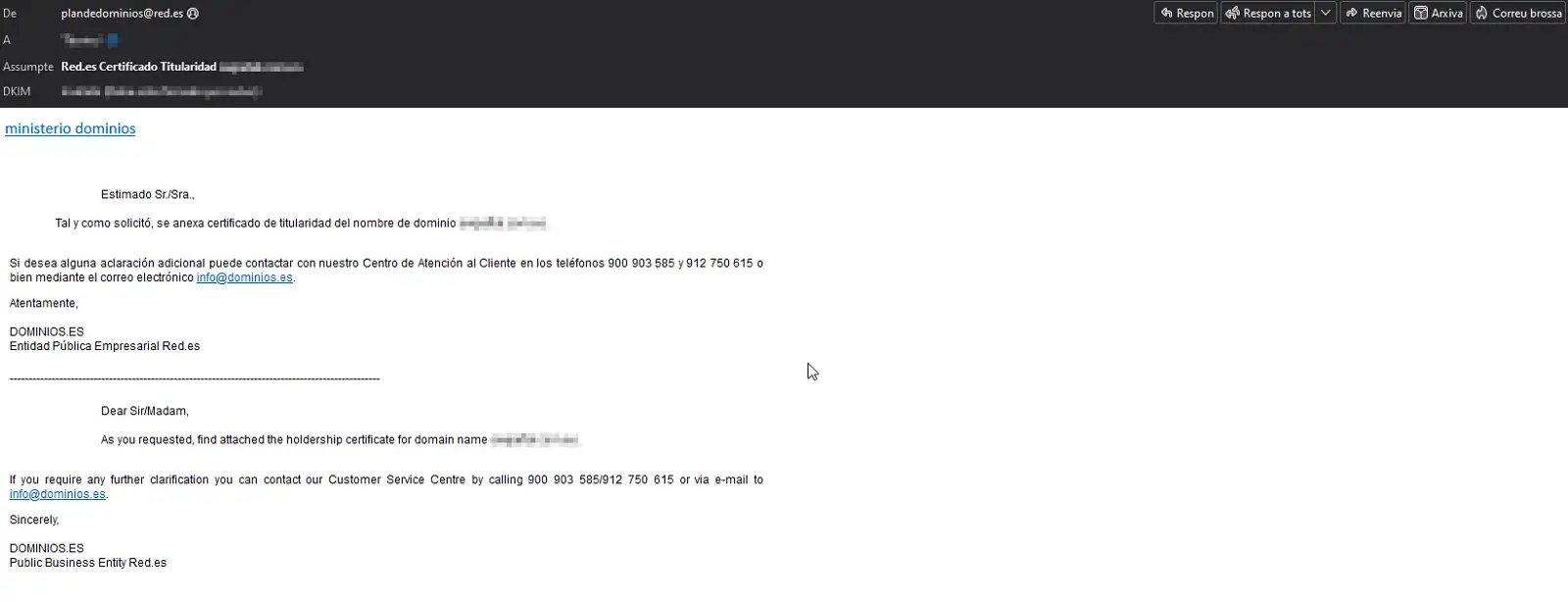
And with this we will have our domain ownership certificate.